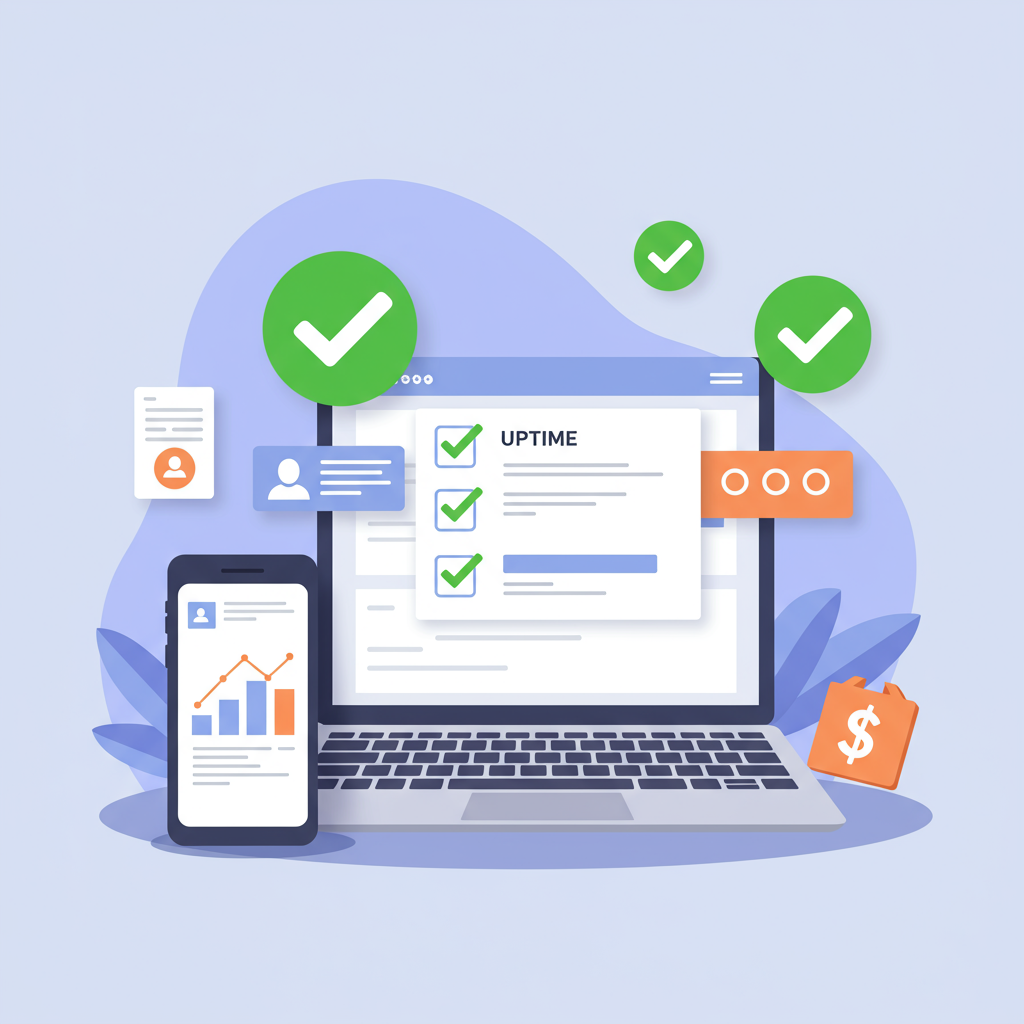Discover why keeping a vigilant eye on your Shopify store’s availability is not just good practice, but a fundamental necessity for protecting your revenue and reputation.
As a Shopify merchant, you’re constantly striving to optimize your store, attract customers, and drive sales. You invest in marketing, product development, and customer service, all with the goal of creating a seamless shopping experience.
But have you ever stopped to consider what happens when your store isn’t accessible? What if, for a few minutes or even a few hours, your potential customers can’t reach your site?
This is where the concept of “uptime monitoring” becomes not just important, but absolutely critical for your Shopify business. It’s a topic I believe every serious merchant needs to understand deeply.
Simply put, uptime monitoring is the process of continuously checking if your website is online and functioning correctly. It’s like having a vigilant guard constantly knocking on your store’s door to ensure it’s open for business.
While Shopify boasts an impressive uptime record, often exceeding 99.99%, it’s a common misconception that this means your store is immune to downtime. Unfortunately, that’s not entirely true.
Shopify’s core platform might be rock-solid, but your specific store relies on a multitude of other components: your domain name, third-party apps, custom themes, payment gateways, and even your Content Delivery Network (CDN).
Any one of these external elements can experience an issue, leading to your store becoming inaccessible or partially broken, even if Shopify’s main servers are humming along perfectly.
Imagine a customer trying to make a purchase, only to be met with a “page not found” error or a broken checkout process. What’s their immediate reaction? Frustration, disappointment, and very likely, they’ll abandon their cart and go to a competitor.
This brings us to the first major impact of downtime: lost sales. Every minute your store is down is a minute you’re not making money. For high-traffic stores, even a brief outage can translate into significant revenue loss.
Beyond immediate financial losses, downtime severely damages your brand reputation. Customers expect reliability. If they encounter issues, their trust in your brand erodes, making them less likely to return in the future.
Think about it from a customer’s perspective. If they have a bad experience, they’re more likely to share it than a good one. Negative word-of-mouth can spread rapidly, especially in today’s interconnected world.
Furthermore, search engine optimization (SEO) is also at risk. Search engines like Google prioritize websites that are consistently available and provide a good user experience. Frequent downtime can negatively impact your search rankings.
If Google’s crawlers repeatedly find your site down, it signals unreliability, potentially leading to a drop in your organic visibility. This means less free traffic coming your way.
So, how does uptime monitoring work? Typically, a monitoring service will periodically send requests to your website (e.g., every minute, every five minutes) from various global locations.
If your site doesn’t respond as expected, or if it returns an error code, the service immediately sends you an alert. This alert can come via email, SMS, Slack, or even a phone call, depending on your setup.
The key benefit here is proactivity. Instead of learning about an outage from an angry customer or a sudden drop in sales, you’re notified the moment an issue arises. This allows you to address it swiftly.
This swift response minimizes the duration of the downtime, thereby reducing lost sales, mitigating reputational damage, and preserving your customer’s shopping experience.
What should you monitor specifically? While your main storefront URL is crucial, I also recommend monitoring critical pages like your checkout process, product pages, and even your Shopify admin login page.
If your checkout page is down, even if the rest of your site is up, you’re still losing sales. Monitoring specific elements like forms or buttons can also provide deeper insights into functionality.
There are various tools available for uptime monitoring, ranging from free basic services to comprehensive paid solutions. Many offer features like global checks, detailed incident reports, and various alert channels.
When choosing a service, consider factors like monitoring frequency, alert options, reporting capabilities, and the number of locations from which checks are performed. More locations mean a better understanding of global accessibility.
Setting up alerts is paramount. Don’t just set it and forget it. Ensure your alerts go to the right people on your team, whether it’s you, your web developer, or your IT support.
Regularly review your monitoring reports. These reports can highlight patterns or recurring issues that might indicate underlying problems with your hosting, apps, or other integrations.
In essence, uptime monitoring isn’t an optional luxury; it’s a fundamental component of running a successful e-commerce business on Shopify. It’s your digital insurance policy against unforeseen disruptions.
It provides peace of mind, knowing that you’ll be the first to know if something goes wrong, allowing you to maintain the seamless, reliable shopping experience your customers expect and deserve.
What do you think about this article? Do you currently monitor your Shopify store’s uptime, or has this opened your eyes to its importance? I’d love to hear your thoughts.
Investing in uptime monitoring is investing in your business’s continuity, reputation, and ultimately, its profitability. Don’t leave your store’s availability to chance.






